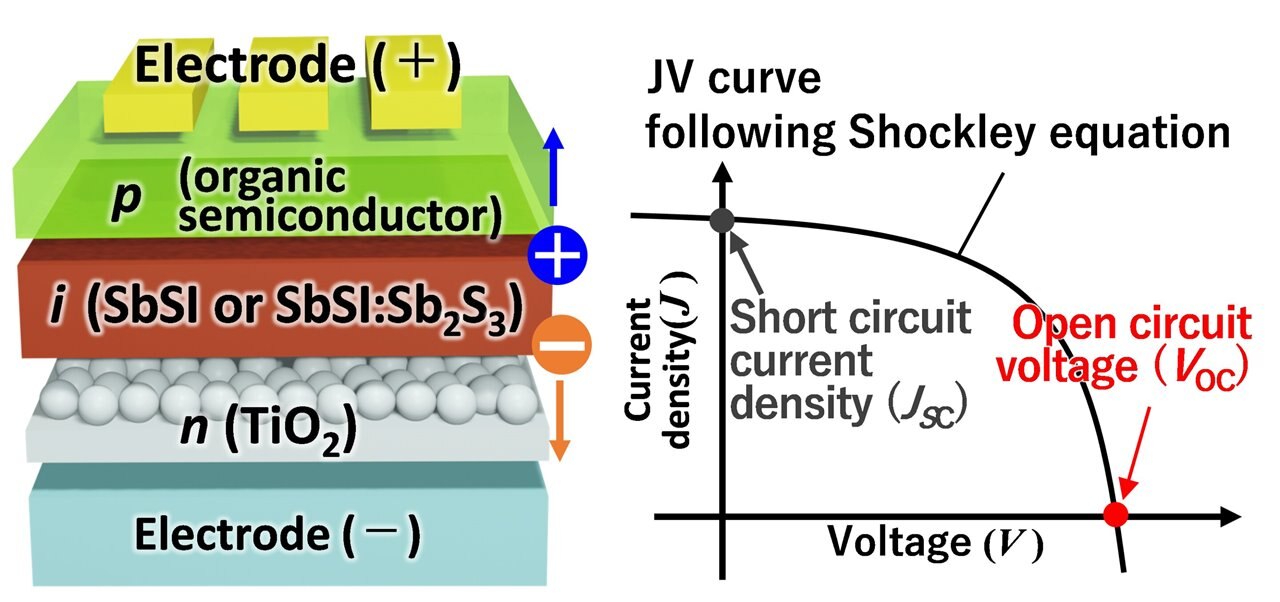
Image showing SbSI and SbSI: Sb2S3 photovoltaic devices. (Image Credit: Ryosuke Nishikubo)
Osaka University scientists recently discovered a new feature of solar cells developed from antimony sulfiodide: sulfide composite they called the wavelength-dependent photovoltaic effect (WDPE). The team realized that the output voltage induced a reversible change without affecting the current by converting the incident’s light color from visible to ultraviolet. This study could pave the way toward new functional light-sensing and imaging devices.
Photovoltaic (PV) devices, such as photodiodes and solar cells, are required for light and image sensors or renewable energy sources since they convert light energy into electronic power. Thin-film PV devices underwent further development, gaining more attention due to their low-cost process, lightweight, and flexibility. While PV devices have been introduced, these lack quick and reversible wavelength-dependent responses.
Differentiating between irradiation colors requires a massive liquid crystal filter that electronically switches the absorption color range. Providing color detection capabilities without relying on such a large filter could help reduce a photovoltaic device’s size. That’s where the Osaka University researchers come in with their latest study. They discovered that their antimony sulfiodide: sulfide composite generated a unique effect.
The generated voltage could change due to light color shifting, where the ultraviolet reduced the output voltage. This suggests that the current can experience a reversible change when different light colors shine on the device.

This image represents the device structure and the schematic of current density-voltage (JV) characteristics. (Image Credit: Ryosuke Nishikubo)
To better understand the effect, the team executed transient photovoltage (TPV) and photo-induced charge extraction by linearly rising voltage (photo-CELIV). These experiments confirmed the reversible change in the current caused by ultraviolet irradiation.
The researchers concluded that metastable “trap” states at the heterojunction interface triggered the WDPE. Interfacial energy traps the decreased output voltage. As a result, the light of varying energies could be differentiated based on the voltage. Vapor sourced from a polar solvent could help improve this change.
This phenomenon could have light-sensing applications, including mobile phones, cars, security systems, microphotography, and space satellites. It can also be used as a renewable energy source thanks to its low production cost and low toxicity.
Have a story tip? Message me at: http://twitter.com/Cabe_Atwell
